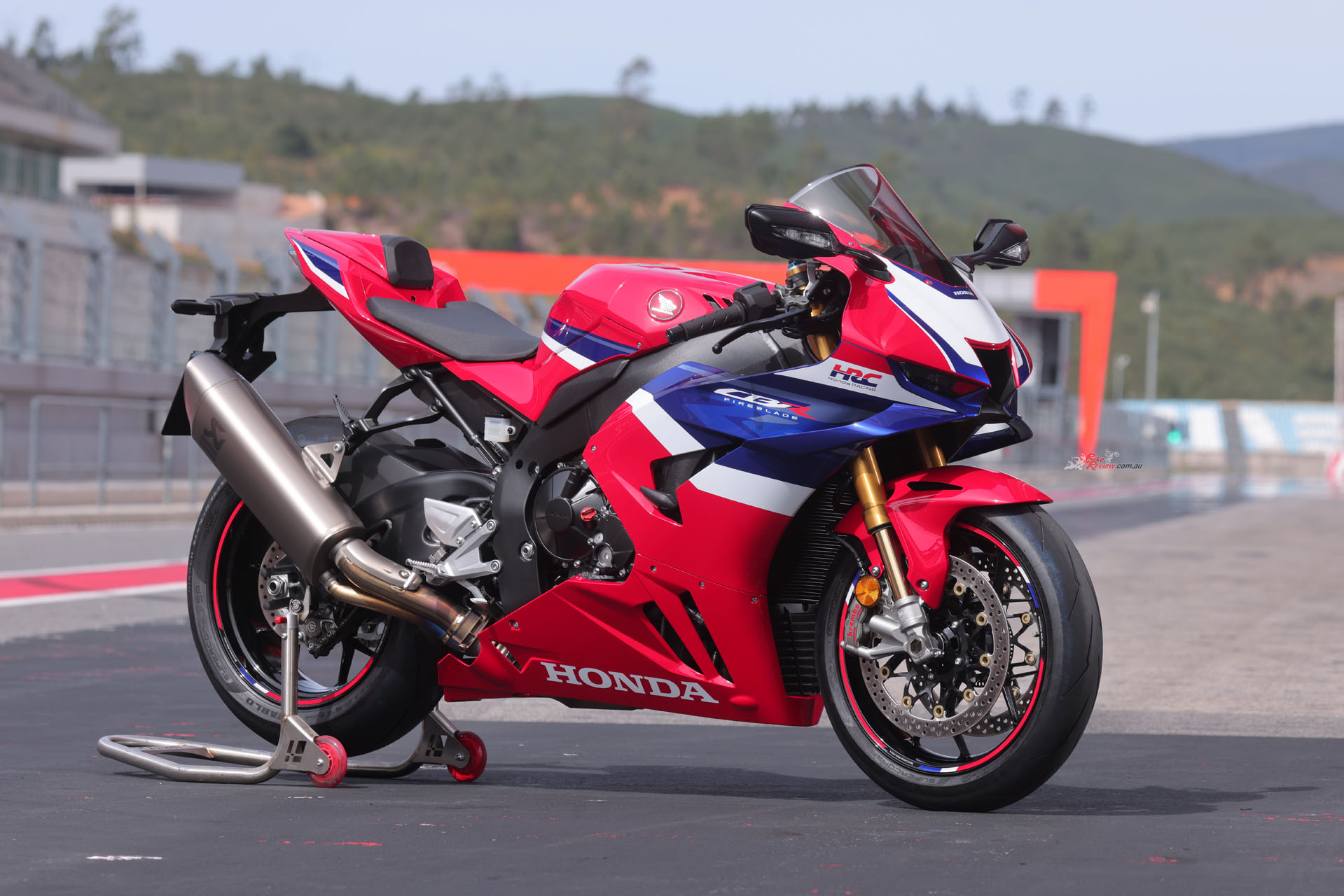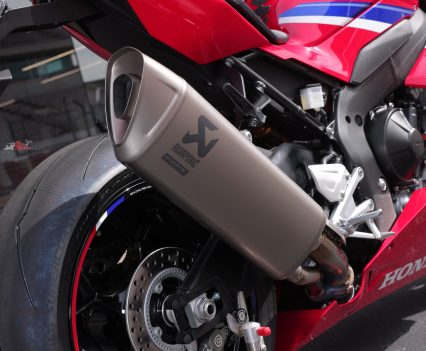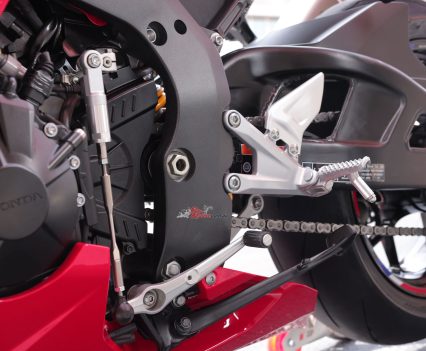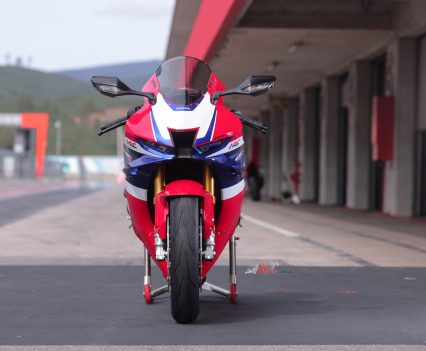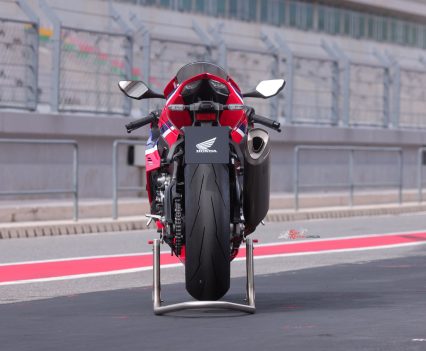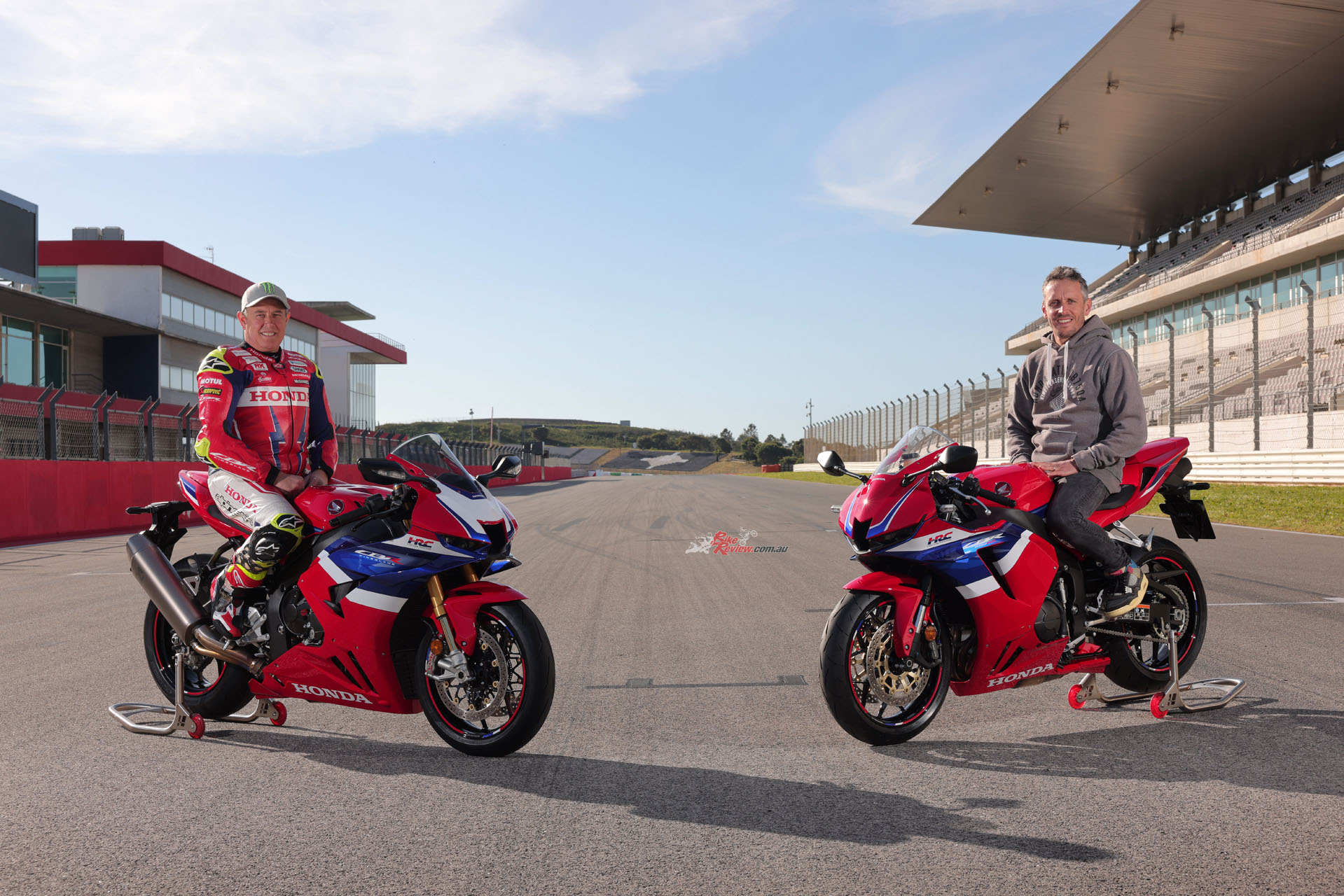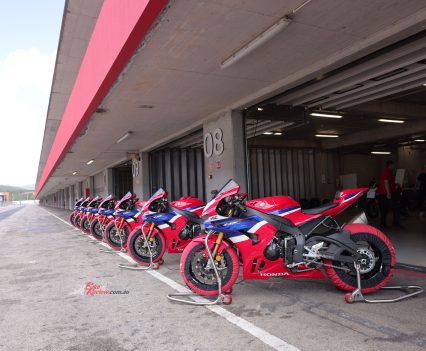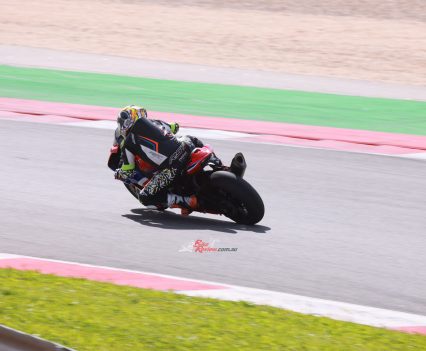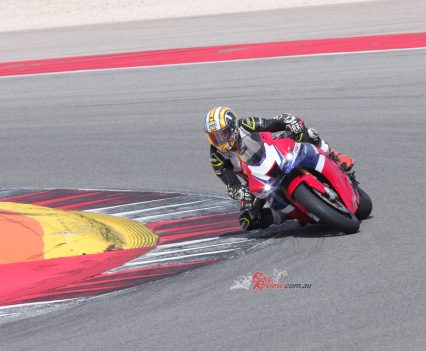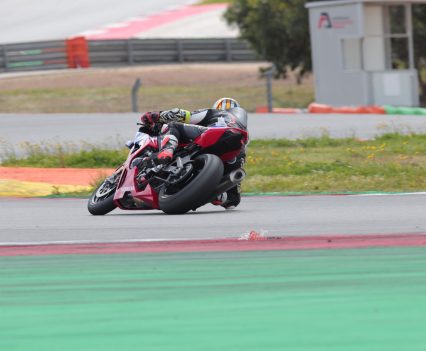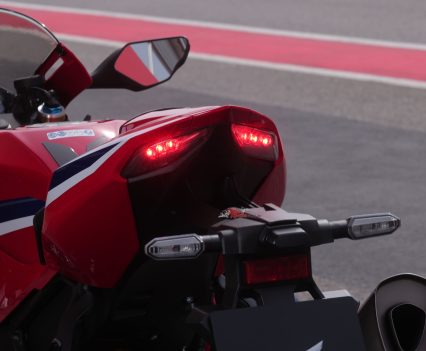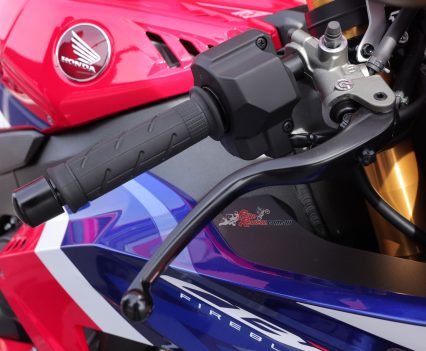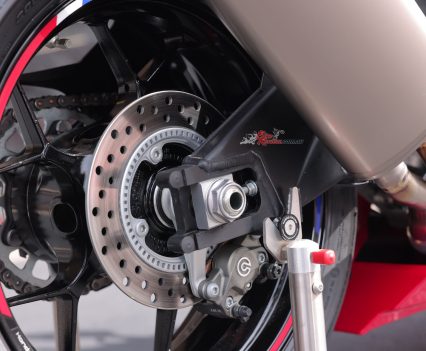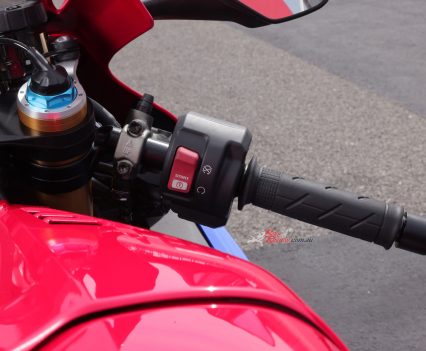While some brands are backing out of the shrinking 1000cc sportsbike market, Honda are going all-out on the Fireblade. The 2025 model CBR1000RR-R SP is the highest tech Blade ever... Pics: Honda
While Suzuki and Yamaha have decided to bow out gracefully from the 1000cc superbike scene, Honda isn’t ready to hang up its leathers just yet. Instead, it’s taking the fight straight to the Ducati V4 Panigale with a seriously race-focused CBR1000RR-R SP…

Honda are not ready to leave the superbike scene with the 2025 CBR1000RR-R SP ready to take on the Italians.
At first glance, with its snazzy new aero bodywork, you might think the 2024 Fireblade is just another facelift. But Honda has gone all out under the bodywork, cramming in cutting-edge electronic wizardry like twin-motor ‘split’ throttles, and a laundry list of upgrades including lighter engine bits, a tweaked frame and swingarm, and the latest Smart EC3 Öhlins suspension. While the focus is clearly on scorching lap times, road riders haven’t been forgotten, with a comfier riding position, beefier midrange, and revised gearing that should make the daily commute a little more thrilling.
Check out our 2020 model CBR1000RR-R SP Review here…
To see just how much bite this new Blade has, we took it to one of Europe’s fastest and most challenging tracks—Portimão in Portugal. It was the perfect playground to see if Honda’s latest superbike can still cut it on the world stage.

“To see just how much bite this new Blade has, we took it to one of Europe’s fastest and most challenging tracks—Portimão in Portugal”…
2025 Updates
HRC engineers could have easily cranked out an even more monstrous version of the Fireblade for 2024, but instead, they opted to craft a machine that excels in corner exits, prioritising control and efficiency over sheer brute force. The engine has undergone significant revisions, with lighter valves, new valve springs, revised valve timing, and port profiles, all contributing to a bump in the compression ratio to 13.6:1. The goal? To smooth out and enhance midrange torque. A lighter crankshaft and titanium conrods further reduce crank inertia, making throttle response razor-sharp.
“While peak power and torque remain at an impressive 160kW/214.6bhp and 13Nm/83.3 lb-ft, they now arrive 500 rpm lower in the rev range—14,000 rpm”…
While peak power and torque remain at an impressive 160kW/214.6bhp and 13Nm/83.3 lb-ft, they now arrive 500 rpm lower in the rev range—14,000 rpm for power (down from 14,500 rpm) and 12,000 rpm for torque (down from 12,500 rpm). This re-tuning aims to deliver a more accessible and controllable performance.
Fuel delivery is now managed by Honda’s Two Motor Throttle By Wire system, commonly known as split throttle bodies. This setup allows two cylinders to operate separately from the other two, theoretically providing a smoother and more precise throttle response. This also enhances engine braking when closing the throttle. The new gearbox features shorter ratios, delivering punchier acceleration, while a new titanium exhaust system with a larger Akrapovic end can keeps things quieter, avoiding the wrath of the trackday noise police.
On the chassis front, Honda has focused on increasing feel and precision. The 2024 Fireblade SP features a new, lighter frame with reduced lateral stiffness by 17% and rigidity by 15%. The RC213V-derived swingarm adds to the handling finesse, and for the first time on a production bike, Öhlins SMART EC3 electronically controlled suspension is featured, with updated settings for its 43mm NPX forks and TTX36 rear shock.

“The handlebars are 19mm higher, and the footpegs are 16mm lower, creating a more relaxed riding position”…
Of course, this being a modern superbike, it’s packed with high-tech rider aids. A Bosch Six Axis IMU powers the cornering ABS, which now includes a ‘Race’ mode, along with nine levels of traction control (HSTC) tailored to the new power delivery. Launch control, wheelie control, rear-wheel lift prevention, and new Two Motor TBW-metered engine brake strategies are also part of the package. The IMU communicates with the Smart EC3 suspension and a three-level electronic steering damper. The quick-shifter now offers three settings—soft, medium, and hard—to suit your shifting preferences.
Even with all this race-focused technology, Honda hasn’t forgotten about road riders. The handlebars are 19mm higher, and the footpegs are 16mm lower, creating a more relaxed riding position. The fuel tank is slightly larger, and the TFT dash now includes a low-temperature mode that drops the redline to 8000 rpm to protect the engine during cold starts.
“Even with all this race-focused technology, Honda hasn’t forgotten about road riders”…
The new bodywork, complete with distinctive winglets, not only looks the part but also reduces yaw by a claimed 10%, making the bike feel lighter in high-speed corners. Plus, it serves as a clear indicator that you’re riding the latest 2024 model—which, surprisingly, hasn’t increased in price compared to the 2023 version.
There’s so much technology packed into this bike that it’s impossible to cover it all here. During testing, there wasn’t nearly enough time to explore all the setup options available through the myriad rider aids, riding modes, and smart suspension features. One particularly nifty addition is a new pre-load guide on the dash, where you can input your weight, and it will suggest the optimal (manually adjustable) pre-load settings.
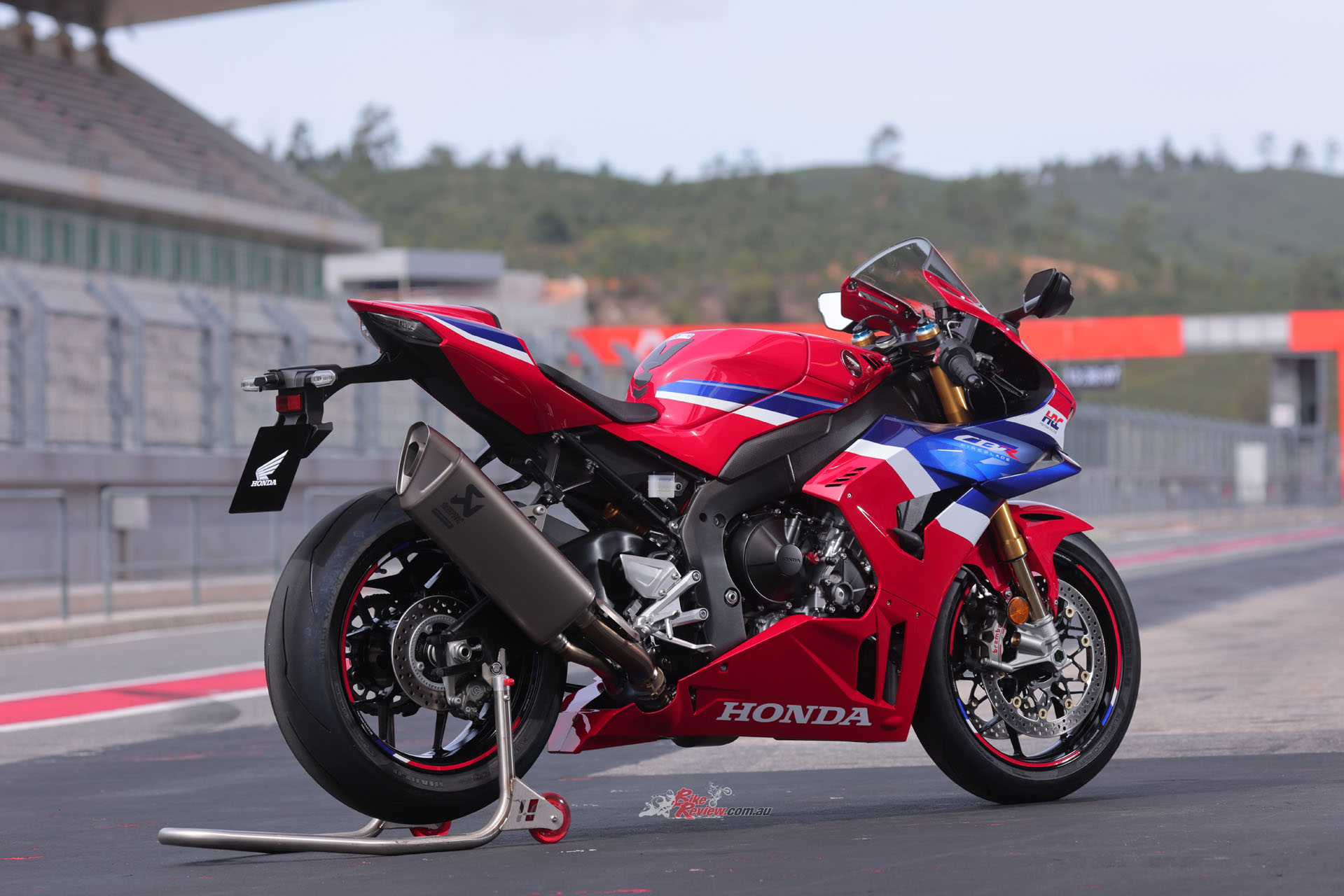
Honda has clearly designed the Fireblade SP to win races, but it’s also ensured that the road rider is well-catered for in this high-tech, high-performance package.
The Ride
Portimão, with its roller-coaster layout, is a MotoGP track that demands respect—and a lot of skill. I’ve had the pleasure (and occasional terror) of tearing around this circuit on the 2017 Fireblade, the Ducati Panigale V4S, and most recently, the 2023 Blade. After a thorough briefing, chatting with Honda engineers, and receiving a word of caution from TT legend John McGuinness about the bike’s capabilities, I thought I was prepared. But I was wrong—I wasn’t ready for this.
Let’s start with the engine. On paper, the 2024 Blade’s power and torque figures are unchanged, but on the track, it feels like someone snuck in an extra 20 horses when nobody was looking. The power is immense, and even as I clicked into fifth gear at just shy of 300km/h on the start/finish straight, the bike was still hurtling forward like it had somewhere very important to be. Honda claims it’s the most powerful inline four-cylinder on the market, and after riding it, I believe them. I expected it to be fast, but this? This is next-level.
“Even as I clicked into fifth gear at just shy of 300km/h on the start/finish straight, the bike was still hurtling forward”…
But it’s not just about raw power. The throttle response is so precise and smooth that it almost feels like cheating. The split throttle bodies produce an addictive soundtrack, complete with the Akrapovic gurgle, and somehow, they make you feel like a World Superbike rider—or at least, close enough. There’s no sudden jolt when all four cylinders open up; it’s just pure, seamless acceleration, delivered with the finesse of a concert pianist. I had the power set to ‘P1’ (the most aggressive setting), but it didn’t feel harsh or snappy. It was dampened and precise, letting me roll on the power a little earlier each lap, trusting the bike to deliver without any surprises.

Insane power needs a smooth throttle and delivery and Honda are the Gods of smooth… When the rains came, Chad was happy about that!
The 2024 Blade delivers power with the grace of a ballerina and the punch of a heavyweight boxer. It’s an unusual feeling, especially at a track like Portimão. Most bikes with this much power are either brutal and unfriendly at low speeds or lose their spark at the top end. The Blade, however, manages to break lap records while being friendly enough that you don’t need a brown paper bag on standby.
“The 2024 Blade delivers power with the grace of a ballerina and the punch of a heavyweight boxer”…
The chassis? Just as impressive. The changes for 2024 might not be dramatic, but they’re effective. The new Smart EC3 Öhlins suspension can be set to semi-active or fixed modes. During my first session on Pirelli slicks, I opted for A (Automatic) Sport mode, then switched to A Track mode on the fly. Modern semi-active suspension systems have come so far that it’s sometimes hard to tell if they’re active or conventional. The feel and feedback from the Blade are exceptional, even on Portimão’s mix of high-G and low-G corners.

“During my first session on Pirelli slicks, I opted for A (Automatic) Sport mode”… “For my second session, I entered my weight into the dash and adjusted the preload settings accordingly”…
For my second session, I entered my weight into the dash and adjusted the preload settings accordingly. The test bike was initially set for a 75kg rider, but I dialled it up to 80kg. This small tweak made a significant difference, making the bike even easier to ride and less prone to wheelies. It’s a testament to the quality of the Öhlins units that such a minor change can have such a big impact.
I can’t recall ever hopping on a 200-horsepower bike and feeling so immediately at ease. The improved ergonomics give you more room to move, and the new chassis with more flex likely contributes to the Blade’s uncanny feedback. Unfortunately, the weather turned sour towards the end of the day, cutting our dry sessions short just when I was ready to start pushing for faster laps. I only had time to explore the automatic suspension settings, and I barely scratched the surface of the rider aids’ full potential.
One feature I’m particularly keen to explore further is the Two Motor TBW-assisted engine brake system. There are three levels of engine braking—EB1, EB2, and EB3—ranging from high to reduced, with the latter two providing more engine braking than a conventional system.
Speaking of braking, the 2024 Blade offers three modes for the cornering ABS: Standard, Track, and Race. In Race mode, the front ABS loses its cornering function, and the rear ABS and rear lift control are disabled—a new feature for this year. The Brembo Stylema R calipers are superb, offering consistent, strong braking that made me feel like I could always brake later than I dared. The combination of Öhlins suspension and cornering ABS gives you the confidence to push hard into fast corners—something that took me a while to get used to.
All in all, the new Fireblade SP is hard to fault. It’s a phenomenal machine, capable of jaw-dropping performance while remaining approachable. However, as someone who prefers a bit of meat on their bones, the frontal area feels a tad small—taller riders might struggle to tuck in fully. The dash and switchgear are also a bit on the complicated side, and if you’re planning to get the most out of the bike, you’ll need to weigh yourself for the perfect suspension setup—never a fun task, especially if you’re trying to cheat the scales.
Conclusion
“Breathtaking and barking mad.” Those were the first words I blurted out after dismounting the 2024 Honda Fireblade SP. On paper, I wasn’t expecting the updates to make such a significant difference. But once I rode it, the improvement was undeniable—this bike is not only quicker around a lap but also easier to ride fast. To put it in perspective, the 2023 Blade dominated the UK’s National Superstock championship, and this 2024 model is a step ahead in every respect. The inline-four engine offers more midrange torque and drive, while the Two Motor Throttle By Wire system makes it even more user-friendly. Oh, and did I mention it sounds gloriously racy, too?
The new frame and Smart EC3 suspension work together to give the rider unprecedented feel and confidence. Honda hasn’t forgotten about the road riders either; the riding position is roomier, and the improved torque spread makes the Blade an even better tool for those spirited Sunday rides. Unfortunately, the short time spent testing makes it hard to quantify just how much better this Blade is compared to its predecessor or where it stands in the superbike pecking order. The BMW M 1000 RR and Yamaha R1M are formidable rivals, and we can’t overlook the Italian competition.
Will these improvements make the Blade a WSBK champion again? Time will tell, still struggling on the world stage, but winning at BSB and podiums at the TT. But honestly, I almost don’t care about the results. The 2024 Honda CBR1000RR-R SP is an absolute thrill to ride—a genuine road-legal race bike with headlights. As other manufacturers retreat from the 1000cc sportbike class, Honda deserves applause for pressing on and delivering something truly special.
2020 Honda CBR1000RR-R SP Fireblade Specifications
Price: Estimated at $50,000 + (click here for a quote)
Warranty: 24 Months
Colours: Red or Black
Kerb weight: 201kg
Fuel capacity: 16.5L
Claimed Fuel Consumption: 6.7L/100km
Power: 214bhp@14,000rpm
Torque: 113Nm@12,000rpm
Engine: 999cc liquid-cooled four-stroke, 16-valve DOHC inline four-cylinder four-stroke, 76 x 55mm bore x stroke, 13.6:1 compression, PGM-DSFI fuelling.
Gearbox: Six-speed, quickshifter Clutch: Slipper clutch, cable actuation.
Frame: Diamond – aluminium twin-spar.
Rake: 24°
Trail: 102mm
Suspension: 43mm Öhlins NXP S-EC3.0 usd telescopic, 125mm travel, Smart-EC semi-active, Showa Öhlins TTX36 S-EC3.0 shock, 143mm travel, Smart-EC semi-active
Brakes: Dual four-piston Brembo Stylema radial calipers, 330mm rotors with cornering ABS, twin-piston Brembo caliper, 220mm rotor with cornering ABS
Wheels & Tyres: 3.50 and 6.00 x 17in; cast aluminium, 120/70 x 17in Pirelli Diablo Supercorsa SP V3, 200/55 x 17in Pirelli Diablo Supercorsa SP V3 or Bridgestone RS11.
Dimensions:
Wheelbase: 1455mm
Seat height: 830mm
Ground clearance: 115mm
Height: 1140mm
Width: 745mm
Length: 2100mm
Dash & Electronics: TFT Display, Electronic steering damper, throttle by wire, IMU, cornering ABS, rear wheel lift control, wheelie control, 5-level power selector, 9-level torque control (TC), 3-level engine brake control, pre-set riding modes (3).
2024 Honda CBR1000RR-R SP Gallery
Ratings | Bike Review | 2024 Honda CBR1000RR-R Fireblade SP
Best Blade ever
At first glance, with its snazzy new aero bodywork, you might think the 2024 Fireblade is just another facelift. But Honda has gone all out under the bodywork, cramming in cutting-edge electronic wizardry like twin-motor ‘split’ throttles, and a laundry list of upgrades including lighter engine bits, a tweaked frame and swingarm, and the latest Smart EC3 Öhlins suspension. We review the CBR1000RR-R SP.



